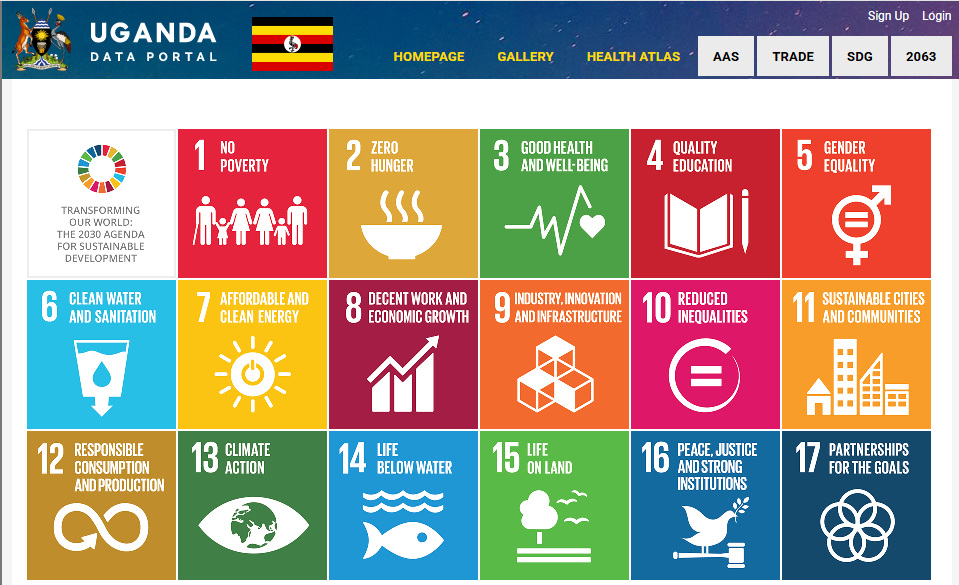
Uganda’s SDG Open Data Portal: Advancing Transparency and Sustainable Development
Uganda is fully committed to the 2030 Agenda for Sustainable Development, a global blueprint adopted in 2015 that established 17 Sustainable Development Goals (SDGs) with 169 targets and 232 indicators.
A key aspect of Uganda’s SDG efforts has been improving data collection and reporting for the global indicators. Uganda has made significant strides in closing data gaps and tracking more SDG indicators over time. At the start of SDG implementation, only 45 out of 201 applicable SDG indicators had available data in 2016. This number rose to 92 indicators in 2020, 119 in 2022, and 149 indicators in 2025. This upward trend reflects intensified efforts by the Government of Uganda through the Uganda Bureau of Statistics (UBOS), the SDG Secretariat and partner MDAs to collect, compile, and validate data across all goals. Uganda’s performance on the SDGs is now regularly assessed. However, data gaps and quality challenges remain, especially in producing timely, disaggregated statistics needed for inclusive planning. Recognizing this, the government has called for interventions including greater investment in data innovation and partnerships, engaging the private sector, academia, and development partners, to generate more granular data and strengthen the evidence base for decision-making, modernizing data systems including automating data collection and establishing new surveys to fill the hard-to-measure indicators among other interventions.
To further enhance transparency and public access to development data, the Government of Uganda through UBOS developed the SDG Open Data Portal, an online platform that disseminates the country’s official SDG indicators. Hosted by UBOS, this portal serves as a one-stop center for all SDG-related statistics in Uganda. Users can find data for each Goal, explore trends, and download datasets for analysis. Uganda’s SDG Open Data Portal centralizes SDG information and makes it freely accessible to all stakeholders. It allows users to browse indicators by goal and view accompanying metadata, definitions and methodologies, ensuring that data is understandable and properly documented.
The Government of Uganda strives to greatly enhance data transparency, foster accountability, as policies and outcomes can be tracked against published metrics. In essence, the SDG Open Data Portal democratizes information as a public good that supports informed planning, monitoring, and advocacy. As of the latest updates, Uganda’s SDG Open Data Portal hosts dozens of indicators, with data series and visualizations, and efforts are made to continually update it and expand coverage until all applicable indicators are included, each with up-to-date figures.
How does the SDG Open Data Portal work? Fundamentally, it is a web-based database aligned to the official SDG indicator framework. The portal is organized by goal and target, mirroring the structure of the 2030 Agenda. For each indicator, users can typically access the latest national value, disaggregated breakdowns such as by sex, age, region, where available, time series data, and source information. Interactive features allow visualizing data through charts or maps, and users can download raw data for further analysis. The portal also includes a “Metadata” section for each indicator, linking to standardized descriptions of how the indicator is defined and measured.
Uganda’s SDG Open Data Portal and accompanying metadata resources represent a milestone in the country’s commitment to open, accountable, and evidence-based governance.

